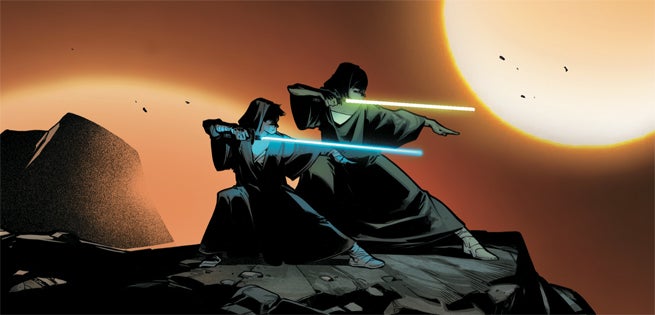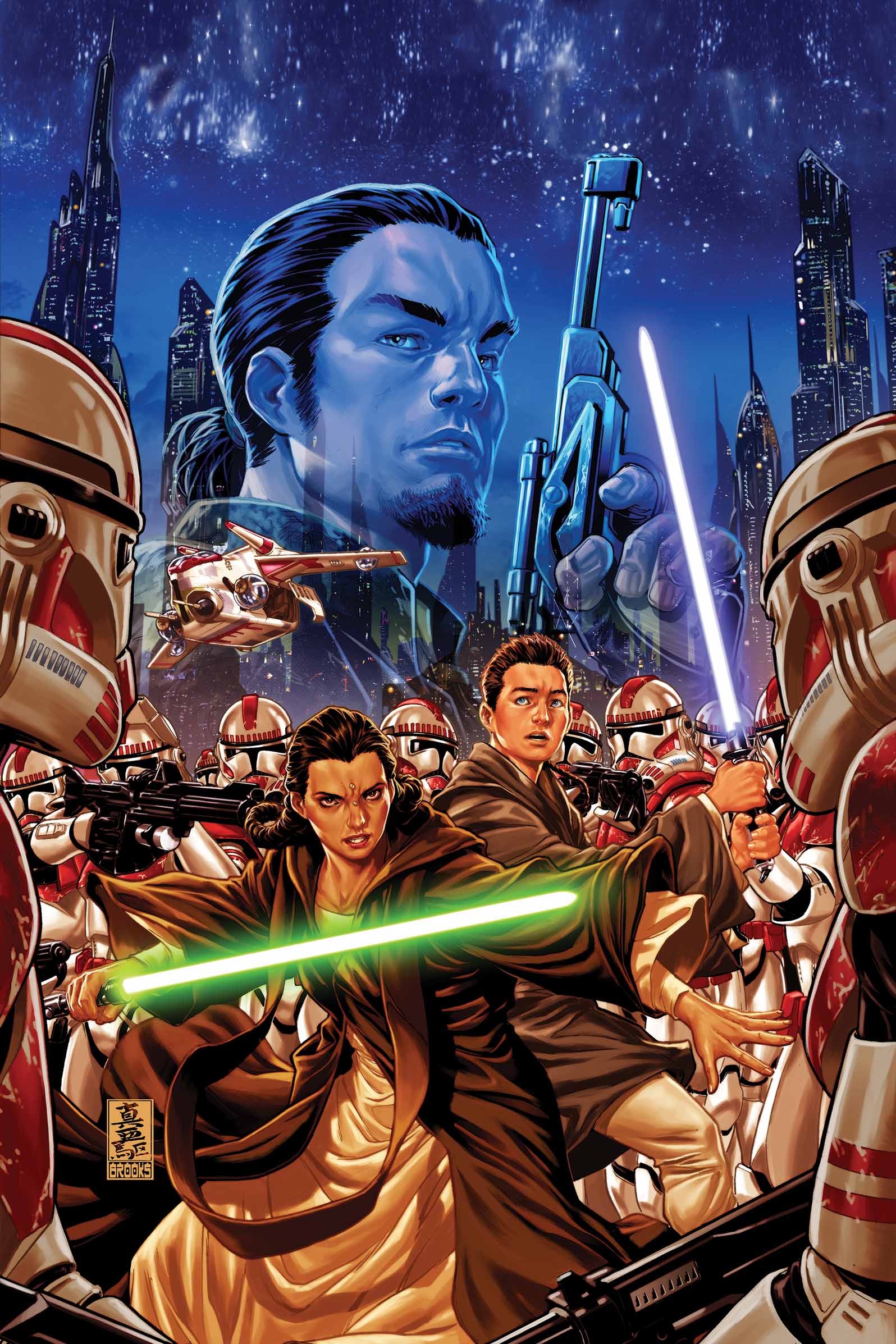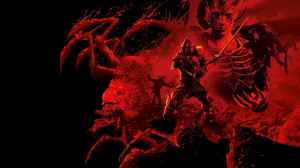We’re going to keep things simple for this week’s MTFBWY, ComicBook.com’s weekly Star Wars column, and focus on the week’s big release: Star Wars: Kanan: The Last Padawan #1.
Videos by ComicBook.com
A book like Kanan has a tall order. It needs to match the tone of Marvel’s preceding Star Wars comic releases, at least to a point. It also needs to stand on its own, as Star Wars and its sister series Darth Vader and Leia all take place between A New Hope and Empire Strikes Back, while Kanan resides in the era at the tail end of the Clone Wars. It also has to be familiar in feel to Star Wars Rebels fans, since this is the origin story of that group’s leader. A tall order (66), indeed.
Luckily, grabbing Greg Weisman, one of the executive producers on season one of Rebels, as the series writer all but assures coverage of at least one of those tonal requirements. The editorial team that launched four consecutive six-digit comics certainly couldn’t hurt, either. Really though, there are three specific scenes that manage to hit these three notes. Mild spoilers ahead, though no direct detail.
Rebels RebelsTwo interestingly contrasting scenes demonstrate how this book falls into the Marvel Star Wars line so well, despite it taking place in a very distinct era. First is Clone Commander Grey’s reception of Order 66. These dark moments pepper the Star Wars universe, and they’ve been present for the comics, for sure. Whether it’s a reminder that yeah, Vader is a bad, bad man, or the looming, recent destruction of Alderaan, we know that these books occur during troubled times for our heroes. The arrival of Order 66 hits right in the middle of an otherwise joyful period, further punctuating the dour future.
The other scene that shows Kanan’s synergy with the other comics – probably the most “Star Wars-y” scene of the entire book – is a simple page of Caleb Dume (Kanan’s old name) and his Master Depa Billaba training with lightsabers. They practice with Zen-like motions, more Tai Chi than Karate, with twin suns setting on the horizon. The one stand-out line in a mostly silent page, “Form follows function. Function may be found in form,” provides a sense of foreshadowing. This could be the mantra for Kanan’s entire story.
But what separates this from the rest of Marvel’s Star Wars line? It’s the Kallerans, who point out that there’s little difference, at times, for neutral planets when it regards the Separatists or the Republic (not knowing, of course, that both factions are ruled by Sith Lords). The Clone Wars are a unique time for the galaxy, where many planets and species are entwined with two warring factions who claim to have their best interests at heart, but rarely consider them once they go to battle. This scene also shows a fiery splash of rebellion from young Caleb, possibly hinting at how he’ll survive the issue’s final page.
Separately, the book’s scenes hit the tonal goals they needs to, but when taken as a whole, it exceeds expectations. Within twenty-some pages, it paints the world surrounding Caleb and Depa, the inner fire fueling his character, the political landscape, the place of the Jedi, and in Depa’s wisdom, something for Caleb to aspire to. Add in several pages of explosive action, and a heart-wrenching ending, and the next issue simply demands to be read.
Regardless if you’re a fan of Rebels, Marvel’s new Star Wars comics, or comics with action and intrigue, Star Wars: Kanan is an ideal series. At it’s core, it’s a purely great comic that also hits all those key Star Wars notes.










